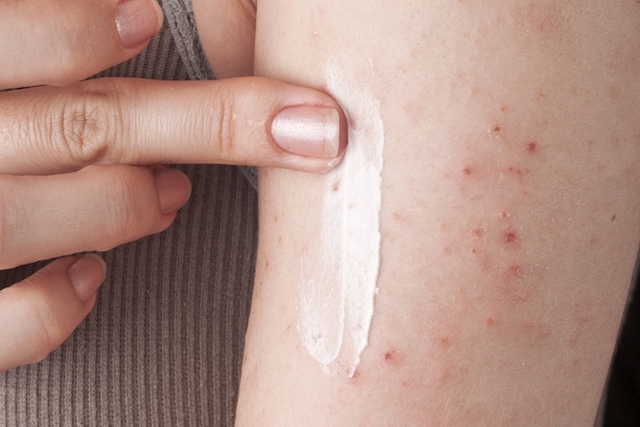- Thyroid nodule symptoms
- What exams to do
- Signs that the lump may be cancer
- Types of thyroid nodule
- How to treat thyroid nodule
- What are the causes of thyroid nodule
- How the thyroid nodule affects pregnancy
The thyroid nodule is a small lump that appears in the neck region and is usually benign and does not represent a cause for concern or need for treatment, especially in older people. However, it is always recommended that any nodule be evaluated by an endocrinologist in order to investigate the cause.
Thus, several tests are performed to confirm benignity or signs of malignancy are verified, requiring more specific tests to make the diagnosis of cancer and initiate appropriate treatment. See what are the signs and symptoms indicative of thyroid cancer.

Thyroid nodule symptoms
Most nodules in the thyroid do not cause any symptoms, being identified by the presence of a 'lump' in the neck. However, in some cases, thyroid nodules can generate symptoms such as:
- Sore throat; Swelling of the neck; Difficulty breathing or swallowing; Weight loss without apparent cause; Tremors and nervousness; Hoarseness or loss of voice.
When a thyroid nodule is suspected, it is recommended to consult a general practitioner or an endocrinologist for tests.
What exams to do
The diagnosis of the thyroid nodule is made by the doctor through physical examination by palpation of the neck. Upon identification, laboratory tests are requested, such as TSH, T3, T4, anti-TPO and calcitonin, and imaging tests, such as ultrasound and thyroid scintigraphy.
From the results of the requested exams, the doctor can request the accomplishment of the Aspiration Puncture by Needle (PAAF), in which a small sample of the nodule is removed and sent to the laboratory for analysis and benignity can be confirmed. or malignancy. Know the tests that evaluate the thyroid.
Signs that the lump may be cancer
Some signs that may indicate that the lump may be malignant and that it is cancer are when:
- Hard nodule with rapid growth: Age below 20 or above 60 years; The nodule has irregular borders; There are changes in the voice such as hoarseness or paralysis of the vocal cords; Other cases of thyroid cancer in the family; The person has had radiotherapy in the region of the head and neck.
There are studies that indicate that the highest amount of TSH indicates that the nodule may be malignant, however many people diagnosed with thyroid cancer have never had changes in blood tests or biopsy, only discovering after the analysis made after removing the nodule.
When the individual has only 1 nodule up to 1 cm in diameter, as long as it is not malignant, the doctor may not indicate any type of treatment, only indicating the performance of an annual thyroid ultrasound and blood tests.
Types of thyroid nodule
When identifying a nodule in the thyroid, its classification must be evaluated through Doppler ultrasonography to determine if it is benign, malignant and what therapeutic measures to adopt. The classification can be done:
| According to Lagalla et al | According to Chammas et al |
| Type I: Absence of vascularization | Pattern I: Absence of vascularization |
| Type II: Perinodular vascularization | Pattern II: Peripheral vascularization only |
| Type III: Peri and intranodular vascularization | Pattern III: Peripheral vascularization greater than or equal to central |
| --- | Pattern IV: Central vascularization greater than peripheral |
| --- | Pattern V: Central vascularization only |
The endocrinologist can also classify the thyroid nodule as being:
- Hypoechogenic: less dense mass than bone and, therefore, the nodule may be filled with liquid or air; Isoechogenic: solid mass with the same density as the bone and which normally has a circular shape; Hyperechogenic: mass with greater density than bone, which may indicate a thyroid nodule with calcification.
Nodules with central vascularization are more likely to be malignant tumors.
How to treat thyroid nodule
The treatment is only used when the person has symptoms, when there is a risk of thyroid cancer or when the lump is more than 1 cm. The most used treatments include:
- Surgery: it is used especially for nodules larger than 3 cm and in cases of malignant nodule to remove all cancer cells, but it can also be used to treat benign nodules when they cause difficulty in breathing or swallowing, as they are very large. Learn all about surgery to remove the thyroid nodule. Levothyroxine remedies, such as Synthroid or Levoid: prevents the production of TSH, the hormone that causes growth of thyroid tissue, being widely used in cases of benign nodule that is increasing in size.
After treatment with surgery, it may be necessary to do hormone replacement as well as to have regular consultations, at least twice a year, at the endocrinologist or head and neck surgeon.
See how to prevent and treat thyroid problems in the following video:
What are the causes of thyroid nodule
The causes are not yet fully known, but it is known that women are the most affected and that those who have other people in the family with a thyroid nodule are more likely to develop nodules like this.
How the thyroid nodule affects pregnancy
The woman who has a lump in this gland has no more difficulty getting pregnant than the others. However, the presence of a lump in the thyroid during pregnancy can cause changes in the production of hormones and, if this happens, the pregnant woman should take medicines that help to regulate the functioning of the thyroid, preventing the baby from being born with delayed physical development or mental, for example.















